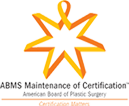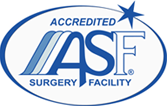Posted: July 8, 2010
Laser resurfacing for Denver residents is in great demand because it allows a quick recovery for people wanting to improve the texture and pigment of their skin and reduce lines and wrinkles.
So, how does it work?
Let’s start with the basics of how lasers help to rejuvenate the skin: how does laser resurfacing reduce wrinkles? The answer is heat!
By heating up the collagen in the skin with the laser, a specialized laser resurfacing in Denver, which are designed to stimulate collagen to smoothen the skin: ultrasound (VASER), radio frequency (Thermage) and light energy (IPL and lasers) all “cook” collagen. (Chemical peels also perform this function.)
The key to a successful treatment is to apply enough heat to smoothen the skin (and stimulate collagen) without applying so much heat that we create excessive thermal injury (a burn).
Ablative Laser
Our older laser technologies apply the heat to the skin from the surface down, so we have to overheat the surface layers of skin cells to get enough heat to radiate down to the collagen in the deeper layers of the skin. In a very real sense then, we’ve been using the laser to apply a controlled burn to the skin. Since the laser is destroying (ablating) the top layers of the skin, it is called the “ablative” laser technique.
While the results obtained are the most effective in smoothening wrinkles, the recovery is difficult; just the same as treating a first- or second degree burn, with stinging, redness, weepy skin and flaking for days to weeks. Depending on one’s skin type and the depth of the treatment, the redness can last for weeks to a few months. There can also be a lightening of the skin’s pigment as a result of these aggressive treatments.
The time for healing depends on the re-growth of the skin cells. Until the skin cells grow back, the skin is raw and weepy, requiring attentive dressing care to assist the growth of the new skin cells, to prevent infection and for comfort.
Not only does this mean several days of messy and tedious dressings, but also being out of the sun and possibly, away from other people, for about one or two weeks. Also, special make-up may have to be used to blend the splotchy red and pink skin for several weeks (or up to 3 months)!
Yet, there still is a place for this aggressive technique for getting the most dramatic improvements for severely damaged and wrinkled skin.
Fractional Laser
An appealing alternative in Denver plastic surgeon uses the fractional laser to disintegrate teeny holes in the skin of the right depth to get the laser’s heat energy down to the collagen “root layer.”
Because the holes are so small, they seal closed and heal by collapsing shut. The skin surface is sufficiently intact or repaired to apply makeup and be in public in only 3 or 4 days!
Because we use less overall heat, there is less thermal injury to the skin. This means less redness, in both the amount and the duration (usually 7-14 days of quickly fading, mild pink).
The other great effect of the fractional laser is that because we are removing a grid of so many tiny holes over the surface of the skin, the skin is tightening as the skin contracts to seal the thousands of tiny holes!
So, fractional laser tightens the skin and smoothes wrinkles by stimulating the collagen with less discomfort and recovery time.
Are we getting all the benefits with none of the disadvantages? **
Of course not. The fractional technique is doing just what the name says: it is treating a fraction of the skin, so the result is a fraction of that of the fully ablative technique.
The ablative technique does do a lot more for deep wrinkles and severely damaged skin, but most people do not need such aggressive treatment, and most of us do not have the time for a longer recovery period.
The fractional technique is more appropriate to refresh and rejuvenate mild to moderate aging changes with a much easier recovery period—essentially a long weekend!
** In skin treatments, results are proportional to the amount or intensity of treatment, but so is the recovery time and potential complications.
Mild and non-invasive therapies (use of skin care products, mild peels and IPL) produce smaller incremental improvements, but require little or no recovery time and minimal risk of complications.
More intense therapies (deep peels, laser) produce more improvements, but require more recovery time, and have more possible risks (like pigment change, infection or scar).
The degree of improvement, the amount of recovery time and the possible risks all increase in proportion to the intensity of the treatment: you cannot get the same results with non-invasive therapies, that you can achieve with more invasive techniques. You cannot have the quick recovery of non-invasive treatments if you undergo a more invasive treatment.





